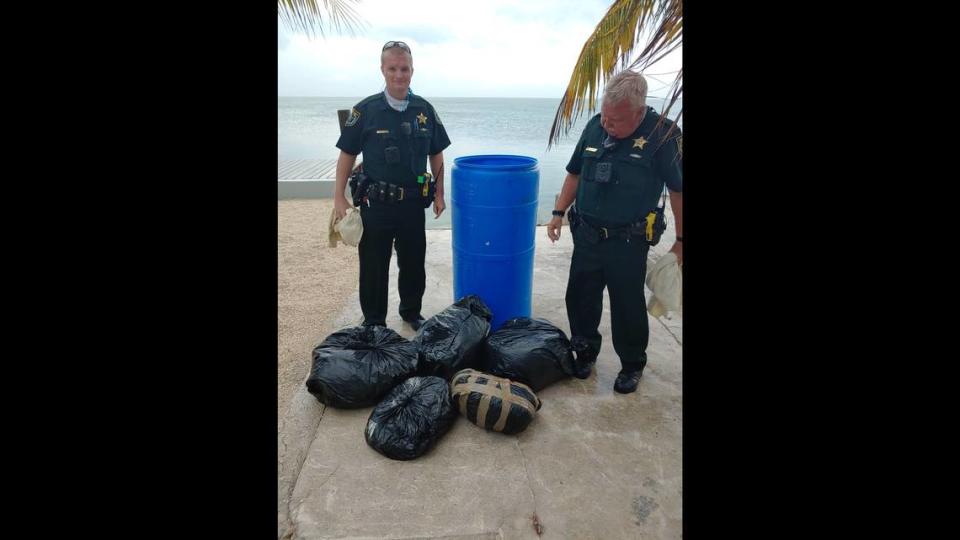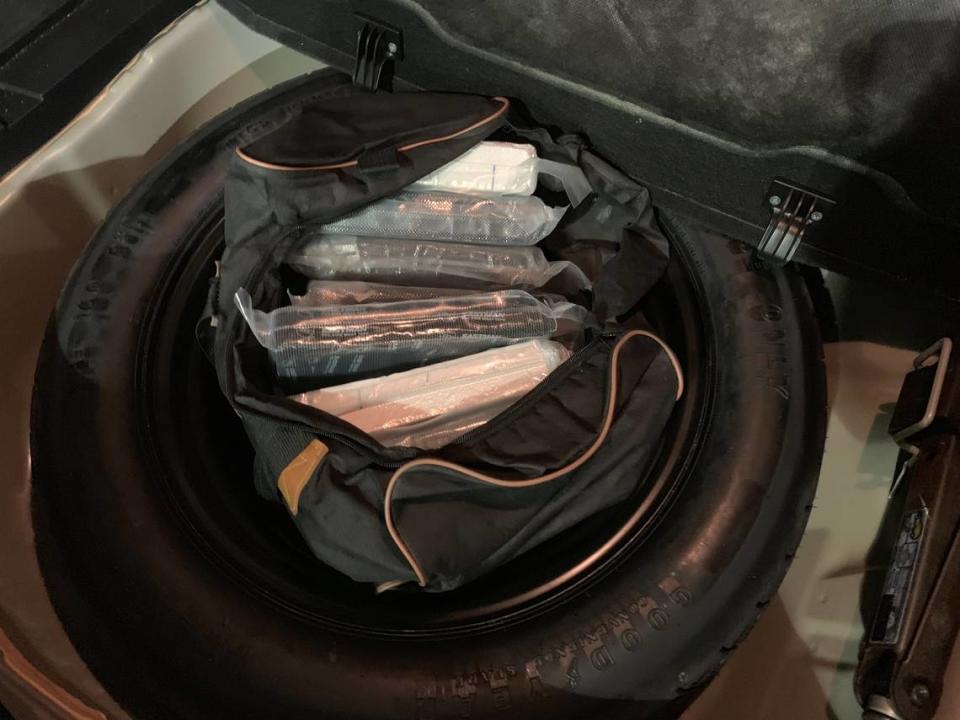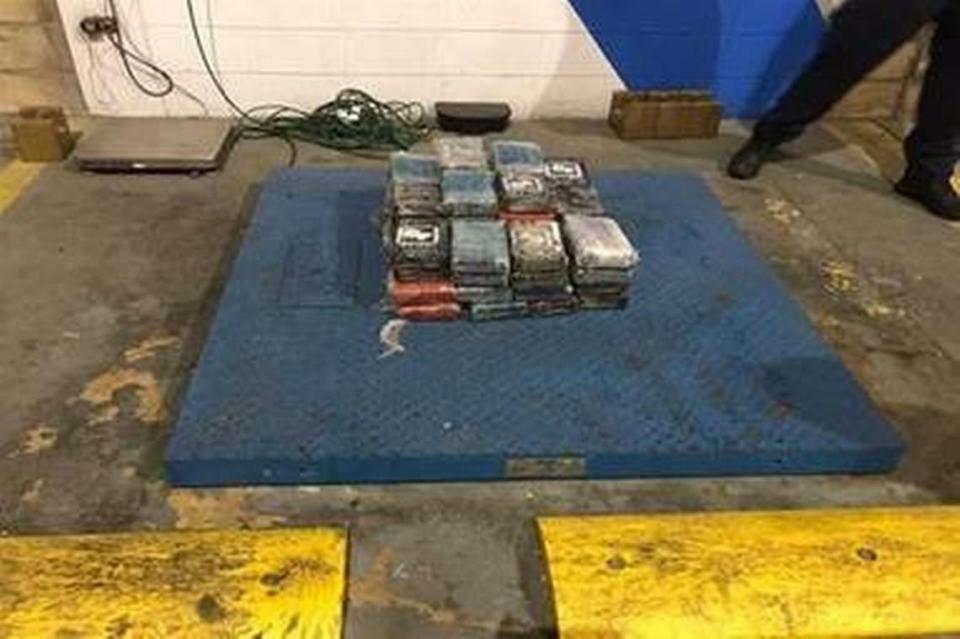Cocaine, meth and weed prices have skyrocketed in Miami. Here’s why
Secretly working with Miami-Dade police detectives, an informant arranged to buy cocaine from a suspected drug dealer outside a Kendall gas station last month.
The cops arrested Alejandro del Rosal Lopez, 48, and charged him with cocaine trafficking. As far as South Florida drug cases go, the operation was run-of-the-mill, save for the price: $1,250 for 31 grams.
‘”Typically, before the pandemic, it could have gone under $1,000 for that,” said Miami-Dade Lt. Alain Cuenca, of the narcotics unit. “The supply on the streets is not as easy to find.”
The street-level transaction was but a small and final link in the global chain of the region’s infamous cocaine trade. But it illustrates a larger economic trend: Six months after coronavirus pandemic restrictions began, the prices of illegal drugs have soared thanks to lower supplies on South Florida streets.
It’s been noticeable for law-enforcement officers, sellers and users alike.
According to federal authorities, drugs such as a cocaine, heroin and methamphetamine have increased between 20 and 50 percent in street value, largely because of restrictions on the U.S.-Mexico border, where most narcotics enter the country. Dramatically reduced air travel between South Florida and South America has also affected supplies, agents say, as has the complete shutdown of the state’s cruise industry, which passengers and crew members sometimes use to ferry loads from Caribbean islands.
“The flow has been hampered by the pandemic,” said Keith Weis, the acting special agent in charge of South Florida’s Drug Enforcement Administration. “All the drug traffickers are having a hard time recruiting couriers.”

Even marijuana has increased in prices — which for some is puzzling because these days, weed is largely imported to Florida from Western U.S. states, where it is grown both legally and illegally.
One South Florida weed dealer said clients have be grumbling because he now charges between $20 and $50 more per ounce. He said he believes the increases are because, during lockdowns when fewer people have been on the roads, it’s riskier to move marijuana in cars cross-country. Also, he says, demand is up.
“There’s still a curfew. You can’t go to a bar to get a drink,” he told the Herald. “People just want to numb themselves out, so they stay home and get stoned.”
Booming Business
Before the pandemic, cocaine and meth use was surging in South Florida — along with heroin and Chinese-produced illegal fentanyl, part of the larger opioid crisis that has ravaged the United States.
Marijuana, meanwhile, is no longer the chief priority of South Florida law enforcement. Clandestine indoor growing operations shifted to other states. Medical marijuana has been legalized, and the passing of a state law legalizing hemp has all but stopped prosecution of most marijuana cases in Miami-Dade County because it’s difficult for authorities to tell the difference between hemp and marijuana.
Then, the coronavirus came along in early 2020. The rapid spread and ensuing worldwide shutdown didn’t just disrupt legitimate economies.
The United Nations reported in May that the COVID-19 crisis was likely to affect affect labor for production of poppy in countries such as Afghanistan, which has since seen a surge in villagers taking to the fields to harvest the plant used to make heroin.

In South America, the price of coca leafs crucial to making cocaine has crashed as cartel supply chains have broken, the Washington Post reported last month.
Wuhan, China, where the novel coronavirus originated, is also a center for the production of chemicals used to make illicit drugs such as fentanyl and meth. The city was all but shut down in early 2020, shaking up the supply chains for Mexican cartels, but experts believe the flow of chemicals has since resumed unabated.
“The route coming from China into the U.S. still seems to be functioning and, unlike Chinese pronouncements that they’ve sharply curtailed production, we’re still seeing a lot of deaths related to fentanyl,” said Louise Shelley, a scholar at George Mason University who studies transnational crime.
Border Restrictions
For the Mexican cartels, the chief problem has been getting the product across the border, according to law-enforcement officials and security experts.
Starting in late March, the United States and Mexico implemented restrictions limiting “non-essential” travel across the border to curb the spread of the highly contagious virus.
The Mexican cartels generally hide shipments of illicit drugs in personal cars and trucks — but the number of those vehicles crossing the border has plummeted from the year before, according to U.S. transportation data. The restrictions will remain in place until at least Oct. 21.
“You can’t just come across for a day trip,” said Bryce Pardo, a drug policy researcher at the RAND Corporation., a Washington D.C.-based think tank. “It increases the risk for drug traffickers.”
Weis, of the South Florida DEA, said cartels have been forced to “rely on different tactics.”
“They’re used to sending a steady flow of smaller shipments, but because of restrictions, they’re relying on bigger shipments,” Weis said.
The trickle-down effect of what academics call the “supply side shock” is now being felt in South Florida.
Law-enforcement officials say cocaine now costs between $25,000 to $28,000 per kilo, more than 20 percent what it cost pre-pandemic. Seizures at U.S. airports and seaports are also down, according to data
According to U.S. Customs and Border Protection (CBP) data, there were 37,380 seizures of cocaine in the first 11 months of the fiscal year that ended Sept. 30 (the final month was not available yet). That’s a far cry from the 89,207 seizures of cocaine in the previous year.
The same goes for cocaine seizures by air and sea, CBP data shows — just 92,113 in that time frame, down from over 227,000 the year before.
Of course, the perpetual cat-and-mouse game between South Florida law enforcement and smugglers hasn’t stopped and the influx of drugs figures to pick up as travel restrictions begin to ease. This week, the Trump administration overruled the Center for Disease Control and Prevention, and will allow cruise ships to sail again in November.
“We would anticipate that activity will pick up as the cruise ship industry comes back online,” said Zach Mann, a spokesman for South Florida’s CBP.
Officers have still been plenty busy.

The U.S. Coast Guard this month offloaded more than six tons of cocaine and 5,759 pounds of marijuana at Port Everglades, drugs that were seized in 12 operations at sea in the Caribbean and Pacific Ocean. On the Miami River, U.S. border patrol officers boarded a freighter two weeks ago and found 33 pounds of cocaine, the agency said.
Over the summer, DEA agents and Miami Police arrested Michelle Contreras, 39, and Javier Contreras, 28, both of California, on accusations they arranged a deal to sell nearly 5,000 fake Oxycodone pills “pressed with heroin” to informant, according to a police report. The two who were working on behalf of a Mexican cartel, police said.
DIFFERING TACTICS
Smugglers are shifting away from the heavily scrutinized ports of entry, authorities say, leading to an uptick in cocaine seized by the border patrol in places such as beaches and deserts. Nationwide, more than 13,000 such cocaine busts have happened over the past 11 months, up from 11,682 the year before.
“Over time, these guys will figure out the way get these supplies back into the market,” Pardo, the RAND drug policy expert, said of the cartels.
In Florida, that’s also meant a throwback to the Cocaine Cowboy days of the 1980s. In the past three months alone, there have been 20 cases of cocaine or marijuana washing up on shore. That’s a 30 percent increase from same period the months before.
That includes 78 pounds of cocaine, wrapped in red plastic, discovered last month discovered by someone walking on Hollywood Beach.
“What’s old is new,” said Mann, the CBP spokesman. “We are adjusting and looking for ways to spot trends and get ahead of the smugglers.”
Miami Herald staff writers Charles Rabin and Nicholas Nehamas contributed to this report.

